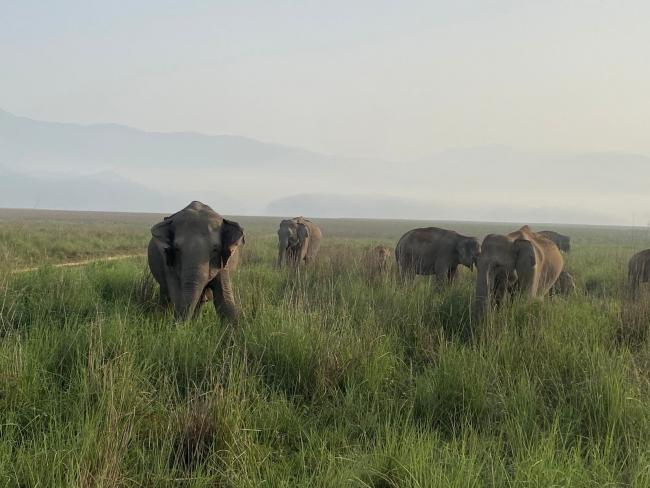DNA sampling to help ascertain elephant population

Pilibhit (UP), May 29 (IANS) Wildlife experts will now use DNA analysis of dung samples, camera trapping and statistical modelling, following a process similar to that used in the tiger count for more scientific estimation of elephant population.
The Union Ministry of Environment, Forest and Climate Change (MoEFCC) has launched the ambitious programme in all 21 elephant range states across India.
The programme's objective is to bolster existing elephant estimation data with scientific evidence.
Ramesh Pandey, director of 'project elephant' at MoEFCC, said that the Wildlife Institute of India (WII) is leading the programme in collaboration with the forest departments of each state.
"The programme's key highlight involves the collection of elephant dung samples, which will undergo laboratory testing at WII for DNA profiling. This scientific analysis aims to identify distinct features of individual elephants, eliminating any overlap or duplication in estimation," he said.
Additionally, for the first time in the elephant estimation process, camera traps are being installed based on a grid system. These traps will capture images of elephants, enabling the assessment of occupancy, density and structure in specific wildlife regions.
The Terai Elephant Reserve (TER) in UP, encompassing several forest divisions, including Dudhwa Tiger Reserve, South Kheri Forest Division, and Katarniaghat Wildlife Sanctuary, has been included in the programme.
"The initial phases of elephant estimation, including surveys of signs and presence of elephants in different pockets, were completed in 2021. Subsequently, a new protocol was introduced, emphasising the need for DNA fingerprinting of elephants," said Pandey.
"According to ocular estimation conducted in 2017, there were over 29,000 elephants across the country. This estimation was based on transect methods, dung analysis, and block count systems. The collection of dung samples in all 21 states is targeted to be completed before the onset of the monsoon, with final results expected by December," he added.
A seven-member research team has reached the Katarniaghat Wildlife Sanctuary to begin the exercise.
Disclaimer: This story has not been edited by the Sakshi Post team and is auto-generated from syndicated feed.





